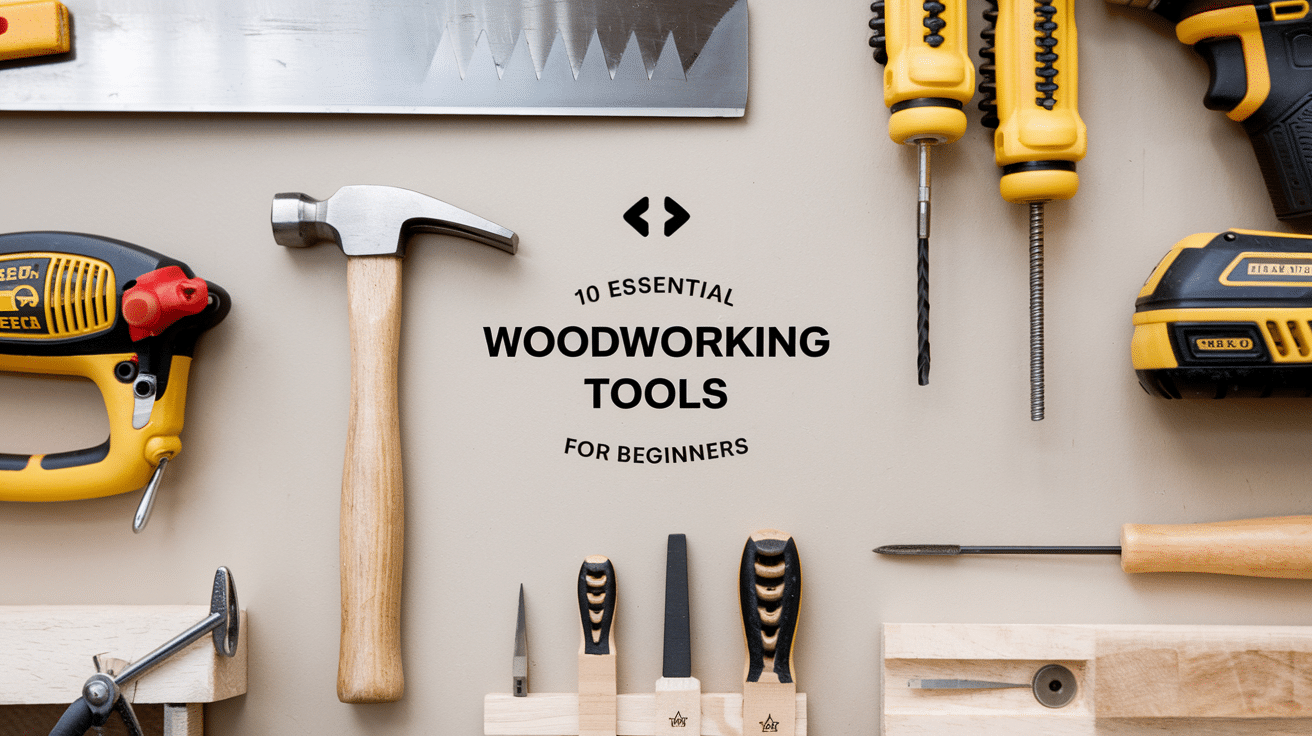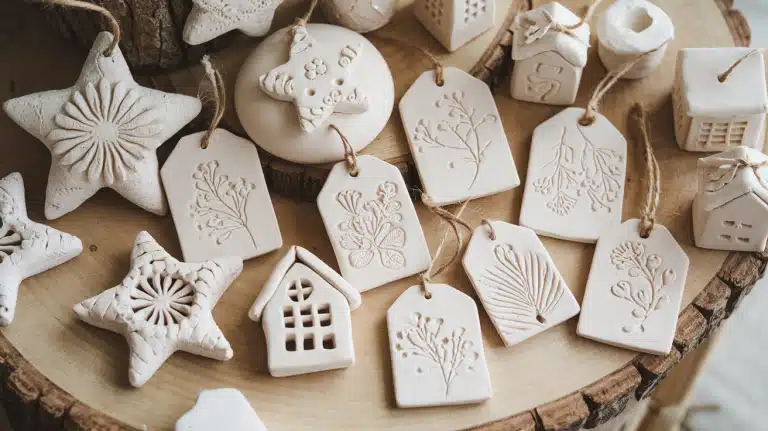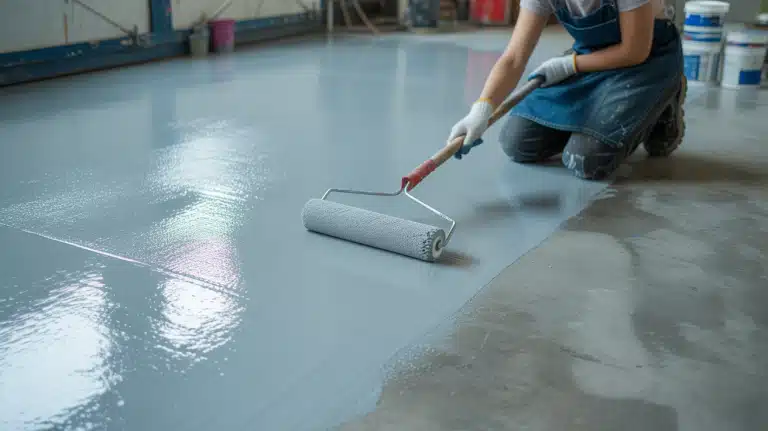10 Essential Woodworking Tools for Beginners
There’s something deeply satisfying about transforming raw wood into something beautiful with your hands.
Whether you dream of crafting custom furniture or tackling home improvements, woodworking begins with having the right tools.
As a beginner, walking into a hardware store can feel overwhelming. With thousands of specialized tools available, it’s easy to get lost in the possibilities – and potentially spend more than necessary.
The good news? You don’t need a workshop full of expensive equipment to get started.
Many experienced woodworkers will tell you that mastering a few essential tools is far more valuable than collecting a large arsenal of rarely-used items.
This guide will explore the 10 essential tools for your woodworking journey.
10 Essential Woodworking Tools Every Beginner Should Own
1. Good Quality Hammer
Your hammer is a precision tool for woodworking that goes beyond driving nails. Its 16-ounce weight provides enough force for general work without causing fatigue.
Look for a smooth face to prevent marring your workpiece and a well-balanced handle that allows controlled, accurate strikes. The claw end should be properly curved for efficient nail removal and gentle prying.
2. Basic Hand Saw
A hand saw teaches fundamental woodworking skills that power tools cannot replicate. Its crosscut configuration, with 10-12 teeth per inch, offers versatility for both rough cuts and finer work.
The teeth geometry is designed to sever wood fibers cleanly across the grain, while the blade length provides enough stroke for efficient cutting with good control.
3. Measuring Tape and Ruler
These tools form the foundation of accurate woodworking. A quality tape measure should have a sturdy blade with clear, durable markings and a firm locking mechanism.
The hook end should move slightly to compensate for inside and outside measurements. The steel ruler provides straight-edge reference and precise short measurements where a tape measure might be awkward.
4. Square
More than just a 90-degree reference, a combination square is a layout powerhouse. Its sliding ruler can mark parallel lines, measure depths, and find centers on round stock.
The 45-degree angle is perfect for miter joints, while the precision-machined head ensures accuracy for all measuring and marking tasks.
5. Set of Woodworking Clamps
Proper clamping pressure is crucial for strong glue joints and safe cutting. F-style clamps provide deep reach and strong pressure, while C-clamps offer compact power for smaller assemblies.
Multiple clamps allow you to distribute pressure evenly across glue joints and hold work securely during operations like sawing or routing.
6. Power Drill
This versatile power tool handles hole drilling, screw driving, and special attachments, light sanding, or buffing. Variable speed control prevents wood splitting and managing different bit sizes.
Modern cordless drills provide the freedom to work anywhere while maintaining the power needed for woodworking tasks.
7. Jigsaw
The jigsaw excels at curved cuts and interior cutouts that would be impossible with straight-cutting tools.
Orbital action settings adjust the blade’s cutting aggression for different materials, while variable speed control helps prevent burning and splitting. Modern jigsaws can also make straight cuts when guided properly.
8. Sander
A random orbital sander combines quick material removal with a swirl-free finish. Its random action prevents visible scratches while efficiently smoothing surfaces.
Dust collection is crucial for workshop air quality and clean results. The variable speed allows fine control over surface preparation and final finishing.
9. Chisel Set
These precision hand tools are essential for joinery, fitting hardware, and cleaning up machine-cut joints. The three sizes handle the most common tasks, from large mortises to delicate detail work.
Quality steel holds an edge longer, reducing maintenance time and improving results. Proper sharpening transforms them from simple wedges into precision cutting tools.
10. Workbench
The workbench is more than a table—it’s your primary workholding tool. Its solid top prevents vibration during hand tool use, while vises and dog holes provide versatile clamping options.
The right working height prevents back strain during extended projects. Integrated storage keeps frequently used tools within easy reach, improving workflow efficiency.
Why Having the Right Woodworking Tools is Crucial
1. Building a Strong Foundation with Quality Tools
Good tools teach proper techniques from the first day you start woodworking. Your hands learn to hold and use each tool without building bad habits.
The appropriate weight and balance help you understand basic skills faster. Each practice session builds your skills instead of forcing you to work around poor equipment.
2. Creating Professional Results
Sharp tools create clean cuts and smooth surfaces in woodworking projects. Well-made measuring tools ensure that angles stay true and joints fit tight.
Working with well-performing tools makes each project look better than the last. Your finished pieces show the care that comes from using quality equipment.
3. Making Smart Long-Term Investments
Although high-quality tools might cost more initially, they can save you money over time. One good tool often works well with several cheaper ones.
Well-made equipment lasts for years, including basic care. Your workshop grows slowly with tools that keep their value.
4. Developing True Craftsmanship
Quality tools help you feel how wood responds to each cut and plane. Your hands learn to read grain direction through clear tool feedback.
Each project teaches you more about working with wood’s natural properties. Skills build naturally when your tools work with you.
Safety Tips Every Beginner Should Follow
1. Essential Safety Gear
Safety begins with proper protective equipment. Always wear safety glasses or goggles to protect your eyes from wood chips, dust, and debris.
Hearing protection is crucial when using power tools, and a dust mask prevents inhalation of fine particles. Keep safety gear easily accessible and make wearing it a habit before starting any project.
2. Proper Tool Handling
Tool safety is fundamental to preventing accidents. Never use dull tools – they require more force and can slip unexpectedly.
Keep your fingers away from cutting edges, and always cut away from your body. Unplug power tools when changing blades or bits. Maintain a firm grip and stable stance when operating any tool.
3. Workspace Safety
A safe workspace is crucial for accident prevention. Keep your work area well-lit and organized. Clean up sawdust and wood scraps regularly, as they can be slippery and create fire hazards.
Store sharp tools safely when unused, and keep power cords away from cutting areas. Have a first aid kit readily available.
4. Key Safety Practices
Your daily safety routine should include several essential practices. For example, you should remove jewelry and avoid loose clothing that could catch on tools.
Always check for nails or screws in reclaimed wood before cutting, and never work when tired or under the influence. Keep a fire extinguisher nearby and know how to use it.
Conclusion
Building a woodworking toolkit is much like learning the craft itself—it’s best to start with the fundamentals and grow steadily. The ten essential tools we’ve covered provide a solid foundation for countless beginner-friendly projects.
Remember that quality matters more than quantity; a few well-chosen tools will serve you better than a workshop full of rarely used equipment.
As you begin your woodworking expedition, focus on mastering these basic tools before expanding your collection. Each project will teach you something new about working with wood and bringing your creative ideas to life.
When ready to add to your toolkit, let your projects guide your purchases. Don’t let perfectionism hold you back.
Every woodworker starts as a beginner, and every project is a learning opportunity.
Take time to practice basic skills and enjoy watching your abilities grow with your tool collection.

















